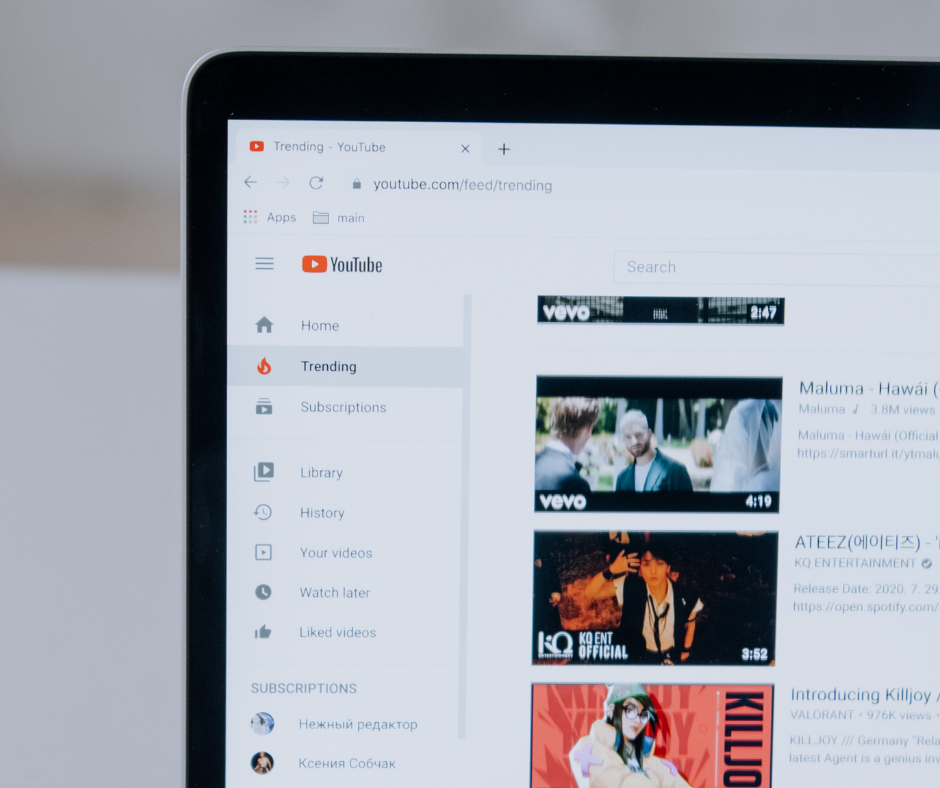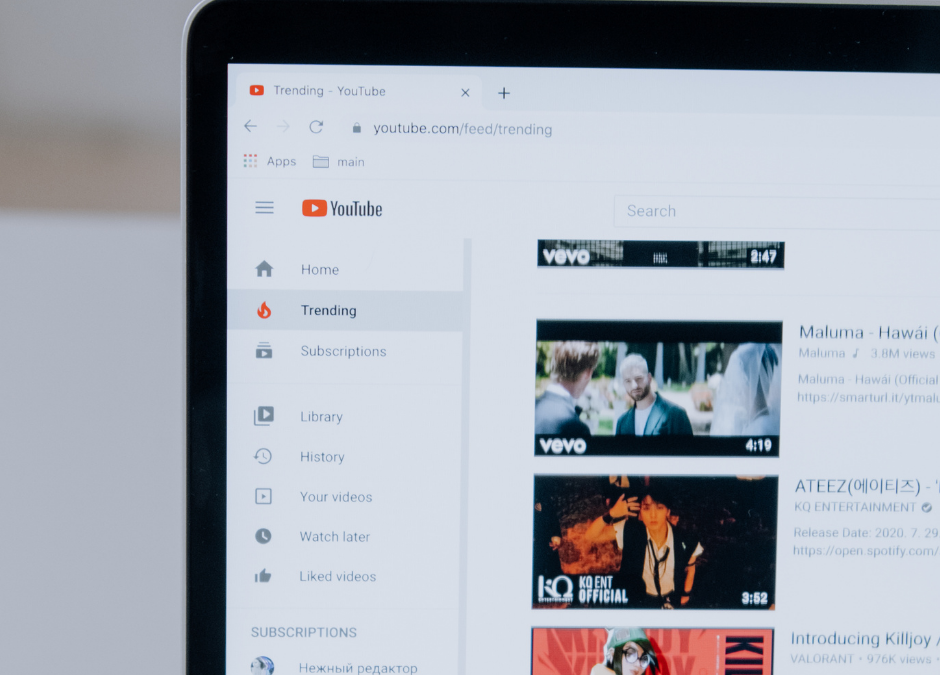
Popularity of Smart Devices and Youtube
Due to the increase in the popularity of YouTube, many people are wondering what is the best way to broadcast live on this popular platform? Well luckily we have the answer. Surveillance cameras can be hugely beneficial to broadcasting on YouTube for a number of reasons and our step-by-step guide will ensure that you will successfully conquer the broadcasting digital platform.
While it may seem that buying a security camera and “putting it on the internet” is all that is required, it is much more complicated than this and requires several measures. You can stream your security camera to YouTube Live for free by just following these steps outlined in the guide below.
Before Getting Started
One thing you must do is check to see if your firewall is interfering with OBS and stopping it from sending data to YouTube.
As well as this, you will have to wait for your YouTube account to be enabled before you can stream to their services. In order to use YouTube’s Live service, you will have to wait 24 hours. This is done in order to assist them in filtering out users who are attempting to host pirated movies, songs, or other illegal content.
The computer you plan to use must be able to run both the appropriate software and the video stream from your camera, as well as transcode it to stream to YouTube Live. The requirements for the computer are stated just below:
Requirements
In order to successfully scream a security camera to a YouTube Live, you will need the following:
1. A Windows computer with Core i5 or i7 and at least 4GB of RAM (Please be aware that attempting to Livestream on a PC with less hardware will result in dropped frames and slow performance).
2. Internet connection with 3-5 Mbps upload speed for streaming one camera at 1080P resolution (Mbps) – It’s worth noting that surveillance cameras with H.264 video encoding require 4Mbps.
3. A single IP Camera or NVR Camera system (best option if you just want to stream one or two cameras with no on-site recording as it is the most cost-effective).
4. An Open Broadcasting Software, and a web browser (OBS is an open-source, free-to-use application that we will be using in this guide. This software is recommended because it is simple to use and, most importantly, it is free).
5. A YouTube account with YouTube Live activated.
6. A 4K camera (We suggest the Avigilon 7K H4 Pro camera).
Let’s take a look at the steps:
Step 1: Broadcasting your CCTV camera onto your YouTube channel
1. To begin, you must ensure that your security camera or DVR/NVR can communicate with each other over your network. This allows your computer to connect to the video stream you’d like to send.
2. Click Download Installer after selecting the big Windows Icon.
3. Run the file you just downloaded.
4. Before attempting to open the OBS-Studio-xx.x.x-Full-Installer.exe again, you will be prompted to install the Visual C++ 2017 Redistributable – make sure to download and install this first.
5. Locate or redownload the OBS Studio install file and run it after installing the Visual C++ 2017 Redistributable. During the installation wizard, leave all of the defaults alone.
6. After accepting the License Agreement, you will be presented with an initial configuration wizard on the first run of the software. Don’t run this wizard.
Step 2: Connecting to your IP Camera
1. Capture the video stream from your security camera over your local network to start the YouTube streaming process. To do so, you’ll need to use a URL to access the stream (link).
2. First build an RTSP URL or connect to your IP camera. You can do this by determining the IP address of your camera, for example:
The IP address is: 192.168.1.121
The URL is: rtsp://username:password@IPAddress:544/cam/realmonitor?channel=1&subtype=0
The RTSP URL is: rtsp://admin:[ourpassword]@192.168.1.121:544/cam/realmonitor?channel=1&subtype=1
3. To get OBS to capture anything, go to the Sources section and press the + button underneath it. This will open a menu from which you can choose Media Source. You can rename the source you’re capturing here; we’ll call it IP Camera Stream in our example. Make sure the box next to Make source visible is verified, then click OK.
4. When all of the options are unchecked, the Input and Input Format fields will be void. We should disregard the Input Format and concentrate on the Input – this is where you will paste the URL.
5. Open the notepad in which the connection was saved. Make sure there are no gaps at the beginning or end of the page when you highlight the whole link.
6. Right-click and select copy – this means the connection will be copied to your clipboard
Step 3: Broadcasting software
1. Return to the Open Broadcaster Software window and right-click and select paste in the Input section – your connection will then be copied from your clipboard and pasted into the input textbox.
2. Select OK. The stream from your camera should appear in a small window in the Open Broadcaster Software. If it doesn’t, then your connection is broken or your camera isn’t accessible from your screen.
3. You’ll need a stream key from YouTube for Live streaming to broadcast video from OBS on your device to your YouTube account. The stream key is a number that uniquely identifies your data and prohibits anyone from broadcasting their media from OBS using your YouTube channel.
Step 4: YouTube account
1. To find the stream key in your YouTube account, go to Creator Studio and press the icon in the upper right hand corner; this will be your profile picture or the regular YouTube head and shoulder photo icon. It will open a small menu with your channel.
2. Select Creator Studio from the menu.
3. When you’re inside the Creator Studio, look for the Live Streaming option on the left-hand side of the screen and press it. Notice that there is a camera mentioned there, but it is a webcam.
4. Now that you’ve arrived at the Stream landing page, scroll down to Encoder Setup. A field named Stream name/key will be present, with a reveal button to the right. This key will be highlighted when you click reveal. It should be copied and pasted into a notepad folder. Make sure this key is kept private so that others cannot stream to your channel.
5. Notice that it will count down from 10 before obfuscating it once more. Before the characters are converted back to dots, you must copy it.
6. You’re able to stream to YouTube Live once you’ve obtained your YouTube stream key and recorded the video from your IP camera inside of OBS. A column labelled Controls can be found on the right hand side of OBS. Under Controls, click on the settings tab.
7. The General tab appears, but we’re only interested in the Stream tab. Select the Stream option from the drop-down menu.
8. When you click the Service option in the Stream tab, it will show a list of services, including Twitch, YouTube/YouTube Gaming, Mixer, and others. Choose YouTube/Youtube Gaming for this. You can choose Primary YouTube ingest server as the server.
9. Copy your Stream Key from the notepad where you pasted it previously for the Stream key.
10. Copy and paste your key into OBS’s Stream key area, then click Apply at the bottom right of the window, then OK.
Step 5: Live streaming
You are more than ready to start streaming if you have properly captured the video stream into OBS, allowed your YouTube Live privileges, and pasted the correct Stream Key into OBS.
While converting the video stream from your security camera to send to YouTube Live, you’ll need to keep your screen on.
Your Live Stream will begin, and the video feed will appear in your Creator Studio.
Note: Due to the fact that it is being broadcast over the internet, there will be a delay between the live action and the video broadcast on the Live Stream.
You are set up for success!
Now that we have taken you through the step-by-step process including all the requirements that are needed, you will be sure to find that your YouTube broadcasting will take off.
We would love to hear from you!
Did this help you? Would you like to know more about surveillance cameras and the growing security industry?
We love to hear feedback from our readers. Make sure to contact us through the link down below:
Clicke here

